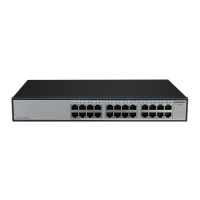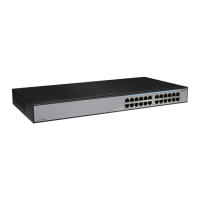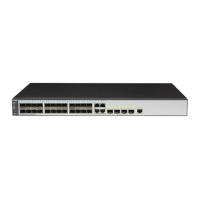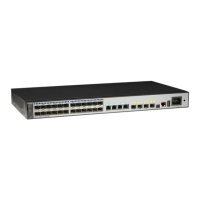4.6.10 Checking the Configuration
After controlling OSPF routing information, you can check information about the OSPF routing
table, interface, and ASBR summarization.
Prerequisites
The configurations of controlling OSPF routing information are complete.
Procedure
l Run either of the following commands to check routing table information.
– display ospf [ process-id ] routing [ ip-address [ mask | mask-length ] ] [ interface
interface-type interface-number ] [ nexthop nexthop-address ]
– display ospf [ process-id ] routing router-id [ router-id ]
l Run the display ospf [ process-id ] interface [ all | interface-type interface-number ]
[ verbose ] command to check OSPF interface information.
l Run the display ospf [ process-id ] asbr-summary [ ip-address mask ] command to check
OSPF ASBR summarization information.
----End
4.7 Configuring an OSPF Stub Area
Configuring a non-backbone area as a stub area can reduce routing entries in the area in an AS
does not transmit routes learned from other areas in the AS or AS external routes. This reduces
bandwidth and storage resource consumption.
Applicable Environment
The number of LSAs can be reduced by partitioning an AS into different areas. To reduce the
number of entries in the routing table and the number of LSAs to be transmitted in a non-
backbone area, configure the non-backbone area on the border of the AS as a stub area.
Configuring a stub area is optional. A stub area generally resides on the border of an AS. For
example, a non-backbone area with only one ABR can be configured as a stub area. In a stub
area, the number of entries in the routing table and the amount of routing information to be
transmitted greatly decrease.
Note the following points when configuring a stub area:
l The backbone area (Area 0) cannot be configured as a stub area.
l If an area needs to be configured as a stub area, all the switches in this area must be
configured with stub attributes using the stub command.
l An ASBR cannot exist in a stub area. External routes are not transmitted in the stub area.
l Virtual links cannot exist in the stub area.
Pre-configuration Tasks
Before configuring a stub area, complete the following tasks:
S6700 Series Ethernet Switches
Configuration Guide - IP Routing 4 OSPF Configuration
Issue 01 (2012-03-15) Huawei Proprietary and Confidential
Copyright © Huawei Technologies Co., Ltd.
116

